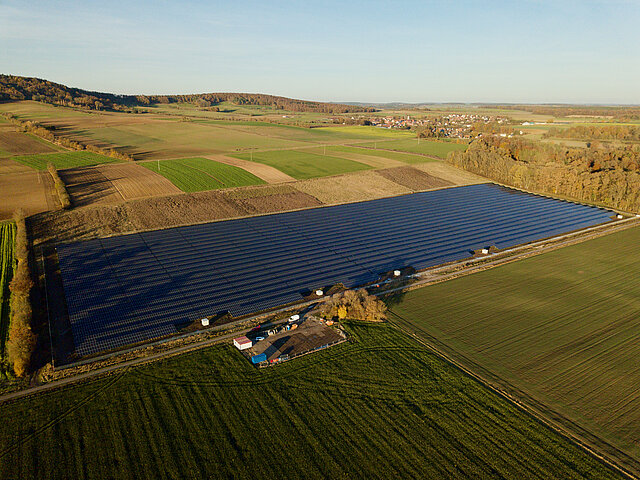
6 hectares of compensation area for species and nature conservation

The project
The Röckingen solar park in the Bavarian district of Ansbach went into operation in the summer of 2021. Since then, the total of 28,140 solar modules have been generating 12.5 million kilowatt hours of climate-friendly electricity for around 4,500 households every year. The output of the solar park amounts to 12.6 megawatts. The entire project covers an area of 16 hectares, of which the solar park itself occupies just under ten hectares. The remaining area will be landscaped with hedges and flowering meadows as a compensatory measure and for visual protection. In this way, the Röckingen solar farm not only contributes to climate protection by generating clean electricity, but also ensures an increase in biodiversity and the protection of nature and species on site.

Compensation measures in solar parks
The Röckingen solar park demonstrates how compensatory measures can be integrated into the expansion of renewable energies, therefore, making a further contribution to nature and species conservation and increasing biodiversity. The solar park itself takes up about nine hectares of the total 16-hectare site, and we have designed the remaining area with hedges and flowering meadows as compensatory measures and for visual protection. The row spacing between the solar modules also plays a major role. With sufficient spacing, the design of the elevated module tables creates three microclimatic zones: full shade, walking shade, and all-day sun. This creates a very species-rich vegetation mosaic that provides a food supply for insects throughout the growth season. Generally, the areas of solar parks, therefore, have a higher diversity, habitat structures are permanently preserved and they provide refuges for various species.



